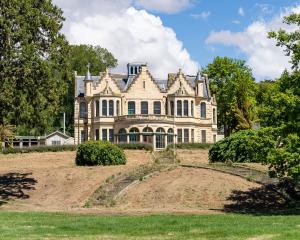Mr Wilson, who turned 100 on September 25, is possibly the only one of the original workers left alive in New Zealand.
He had two stints at the dam, the first in 1928 when construction started and the second during World War 2 as one of the Home Guards keeping watch at the dam, which had been declared of national importance by the Government.
Mr Wilson said conditions were tough and some of those who turned up for jobs, particularly when employment was scarce during the Depression, did not last long.
"They were coming and going all the time," he said.
He described the working conditions as "slave labour" but acknowledged that, for many, it was the only job going at the time.
They worked with picks and shovels, first excavating the "blue hole" in the middle of the dam to get down to a solid foundation.
During the winter, it was very cold and frosts were heavy.
The men were provided with canvas gloves - not to keep their hands warm, but to stop them sticking to their tools.
Mr Wilson worked cleaning and sorting "bad from the good" timber for boxing, used to pour the huge concrete blocks that made up the dam.
Undamaged, smooth timber with few knots had to be selected, then sorted into sizes.
He also guarded the workers' tools in a huge shed constructed after equipment went missing.
"One man, who had worked on the Titanic, had a huge chest of tools that took four men to carry into the shed. Some of the tools were so technical and specialised that most of the others didn't know what they were used for," he said.
Another of Mr Wilson's jobs was screening shingle to select the finest mix to make the smoothest concrete.
There was no screening machine.
A screen was set up about 2.5m off the ground and workers had to use shovels to throw the coarse mix up on to it, then shake it.
The material that fell through was the right size for the concrete.
"It was hard going - tough on the shoulder muscles. At the end of the week you nearly cried when you lifted your arms," he said.
Once there was a pile of suitable shingle, five men were needed to move the screen further along, then the shovelling started again.
Mr Wilson later volunteered and joined the army, but was "man-powered" out for farm work because of his farming background.
As a member of the Home Guard, he joined 10 or 15 others guarding the Waitaki dam during World War 2.
They worked in shifts with two guards each on the Canterbury and Otago sides of the dam.
At night, it was pitch black, because all the lights had to be switched off.
All unauthorised access to the dam and its powerhouse was prohibited.
Anyone approaching was challenged if they were not known or did not have clearance.
"We would tell them to halt and speak up so we could recognise them," he said.












